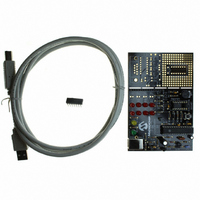DV164101 Microchip Technology, DV164101 Datasheet - Page 45

DV164101
Manufacturer Part Number
DV164101
Description
KIT DEV PICKIT1 FLASH 8/14PIN
Manufacturer
Microchip Technology
Series
PICkit™ 1r
Type
MCUr
Specifications of DV164101
Contents
PIC Kit 1 Circuit Board, CD-ROMs, USB Interface Cable and Booklet
Processor To Be Evaluated
PIC12F675
Interface Type
USB
Silicon Manufacturer
Microchip
Core Architecture
PIC
Core Sub-architecture
PIC12, PIC16
Silicon Core Number
PIC12F, PIC16F
Silicon Family Name
PIC12F6xx, PIC16F6xx
Rohs Compliant
NA
Lead Free Status / RoHS Status
Lead free / RoHS Compliant
For Use With/related Products
Microchip's 8-14 Pin FLASH Microcontrollers
For Use With
AC164122 - BOARD DAUGHT PICTAIL SD/MMC CARDAC164120 - BOARD SIGNAL ANALYSIS PICKIT
Lead Free Status / Rohs Status
Lead free / RoHS Compliant
Other names
DV164101R
DV164101R
DV164101R
Available stocks
Company
Part Number
Manufacturer
Quantity
Price
Company:
Part Number:
DV164101
Manufacturer:
Microchip Technology
Quantity:
135
2004 Microchip Technology Inc.
C.3.1
Switch bounce is intermittent contact and release of the switch contacts. Two
parameters characterize switch bounce: bounce period and bounce duration.
Bounce period is the random length of time the contacts remain open, or closed, while
the bounce is occurring. Bounce periods can vary anywhere from a few nanoseconds
to a few milliseconds.
Bounce duration is the time from the leading edge of the first bounce period to the
trailing edge of the last bounce period. The difficulty is bounce duration is
indeterminate.
Bounce abatement design starts by making assumptions based on empirical data.
The first assumption is bounce period will be absolutely less than 10 milliseconds.
Experience dictates this is a good assumption, however, bench and field-testing are still
essential to ensure the switch selected for the application does not have a longer
bounce period. The second assumption is the total bounce duration is indeterminate.
A good design should work regardless of how long the switch bounces provided that it
eventually does stop bouncing.
C.3.1.1
Consider a simple push button application. In this case, some event should occur when
a button is pushed. Ideally the invoked event will occur immediately, and only once for
each button push. The system should also be ready to respond to a repeat button push
as soon as possible after the button is released. This presents an apparent dilemma.
How is the difference between switch bounce and repeated button pushes determined?
Recall the assumption that the bounce period is less than 10 milliseconds. If the switch
input level is stable for longer than 10 milliseconds, then bouncing has stopped and the
input level represents the pushed or released switch state. The Brute Force method
only cares about a button-push event because this is what invokes the action. It
recognizes the switch release state as the stable state and everything else is
considered unstable. When the switch becomes unstable, the action is invoked
permitting nothing to happen until the switch returns to the released stable state.
The flowchart in Figure C-3 outlines the software actions necessary to implement the
Brute Force debounce method. Notice that the debounce loop is looking for a stable
released state for 10 milliseconds before returning to the top of the main loop. Any
instability, including a stable button pushed state, resets the debounce 10 millisecond
timer.
Design
BRUTE FORCE DEBOUNCE
DS40051D-page 41












